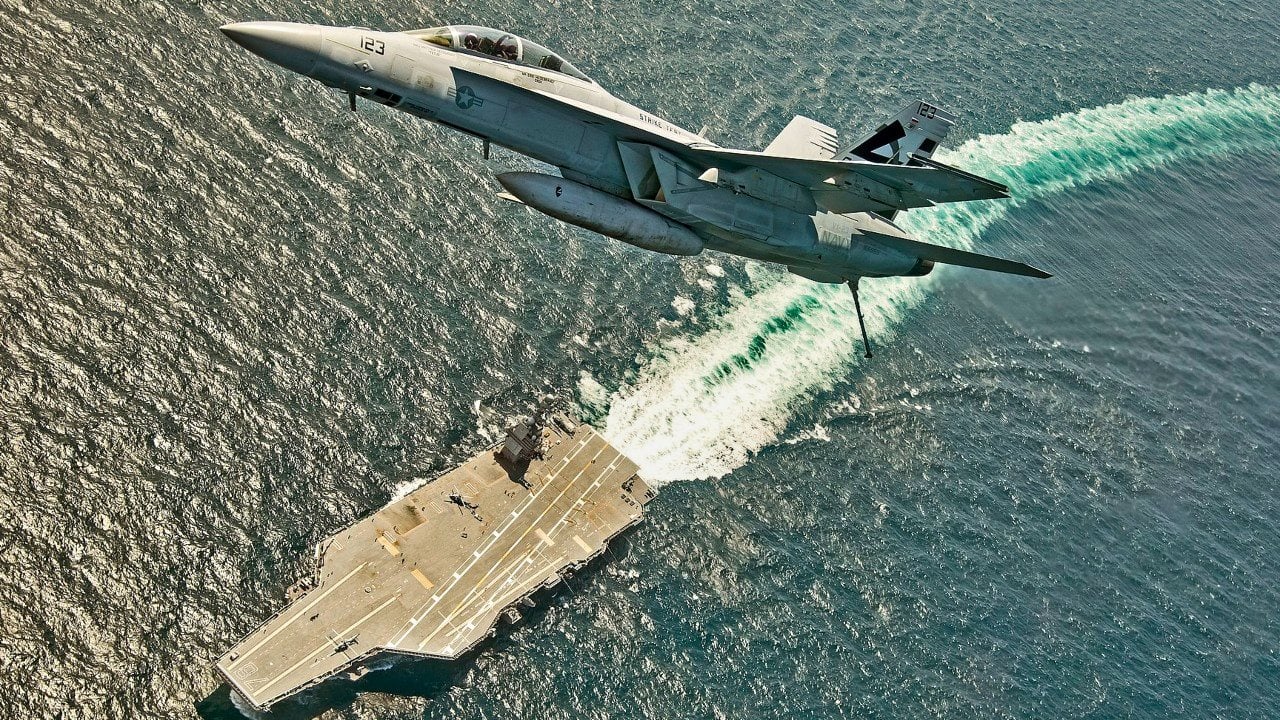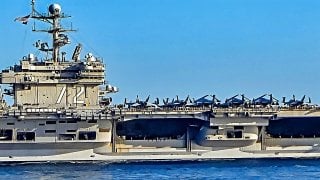The Navy's New Ford-Class Aircraft Carriers Cost $120,000,000,000
The U.S. Navy is transitioning from the Nimitz-class to the Ford-class aircraft carriers, with each Ford costing $13 billion and the total program set to cost $120 billion.
What You Need to Know: The U.S. Navy is transitioning from the Nimitz-class to the Ford-class aircraft carriers, with each Ford costing $13 billion and the total program set to cost $120 billion.

-This significant investment is justified by the cutting-edge technologies integrated into the Ford-class, which are designed to enhance its operational efficiency.
-The Ford’s Sortie Generation Rate (SGR) is projected to be 33% higher than that of the Nimitz-class, enabling it to launch over 160 sorties per day. Additionally, automation on the Ford will reduce the crew size by 1,100, leading to long-term cost savings despite the hefty upfront expense.
Ford-Class: The Navy's $120 Billion Gamble on the Future of Warfare
The U.S. Navy is updating its fleet. Most notably, the Navy is transitioning slowly from the Nimitz-class carrier to the Ford class – the most expensive warship in human history. Each Ford will cost $13 billion. To date, the total program cost will set U.S. taxpayers back a cool $120 billion.
The taxpayers and the Pentagon expect a proper return on their investment. But what could justify the expense of a $13 billion vessel?
Boosting the Price Tag
Aircraft carriers are inherently expensive. You’re never going to build a truly cheap aircraft carrier. You need the materials, the space, and the equipment to assemble a ship that can stretch out one-fifth of a mile. Then, you have to build the aircraft carrier to accommodate the multi-thousand-person crew required to operate the vessel. You also need space for the 100 or so aircraft that the vessel is designed to ferry around the world.
So the aircraft carrier isn’t like a destroyer – a boat with some crew quarters, some guns, and some radar. (I’m underplaying the complexity of a modern surface vessel, but you get the idea.) Rather, the aircraft carrier is a floating city and a floating airbase – an expensive venture.
But even relative to other aircraft carriers like the Nimitz and the Enterprise, the Ford is still expensive. Why?
Loaded With New Technology
Not that the Nimitz or Enterprise were generic vessels – but the Navy really set out to incorporate novel technological features into the Ford. The quest to design, develop, build, and test those features – the R&D – was quite expensive.

The idea behind much of the R&D was to improve the Ford’s Sortie Generation Rate (SGR). An aircraft carrier’s SGR is, after all, the whole point. The aircraft carrier exists to launch aircraft, so the SGR measures how effective a carrier is. The Ford was built to have a high SGR – up to 33% higher than the Nimitz class. If all goes well, the Ford will launch more than 160 sorties per day, with the ability to reach 270 during a wartime push. The high SGR will make the Ford effective with respect to the aircraft carrier’s primary task of projecting airpower.
The Navy also spent money on new technologies that should, over time, actually reduce the cost of the Ford class. Namely, the service invested in automated systems. These will reduce the Ford’s reliance on human crews, which are of course quite expensive. Humans need to eat, sleep, and shower. They need time off, R&R, medical attention, and retirement pensions. On most vessels, aircraft carriers included, the human crew is roughly the most expensive feature. But the Ford has been designed with automated features that will allow the vessel to sail with about 1,100 fewer sailors than the 5,000 required to sail the Nimitz. In the long term, the 20% reduction in manpower should help the Ford save money.
About the Author: Harrison Kass
Harrison Kass is a defense and national security writer with over 1,000 total pieces on issues involving global affairs. An attorney, pilot, guitarist, and minor pro hockey player, Harrison joined the US Air Force as a Pilot Trainee but was medically discharged. Harrison holds a BA from Lake Forest College, a JD from the University of Oregon, and an MA from New York University. Harrison listens to Dokken.
Image Credit: Creative Commons.


